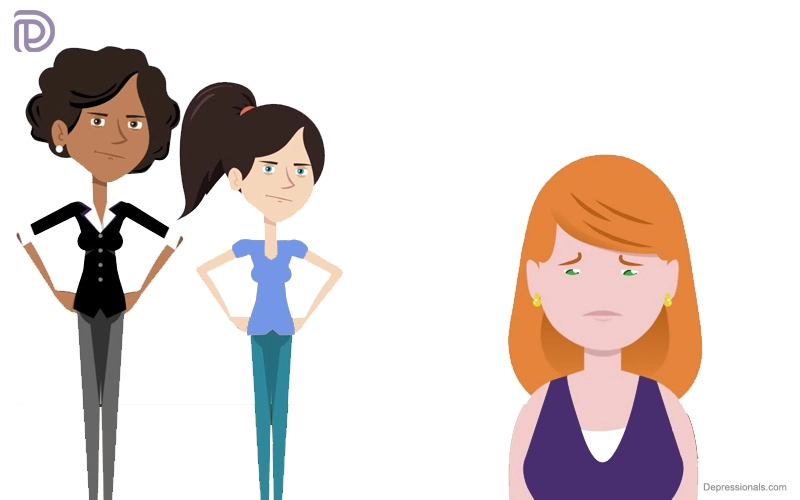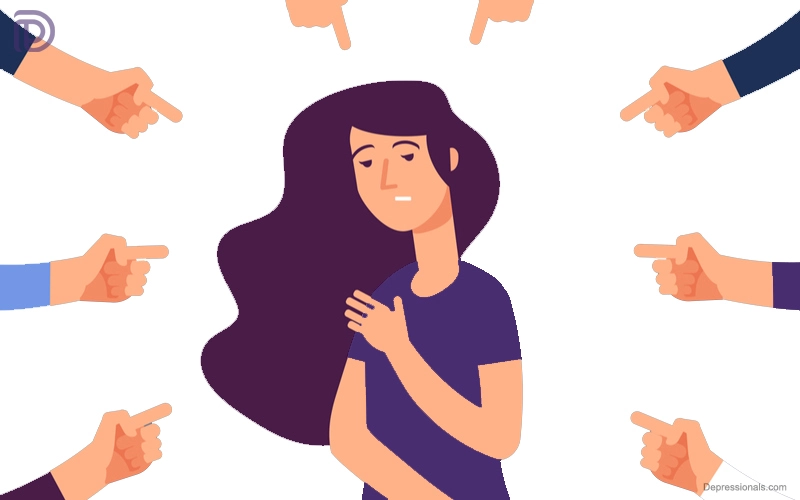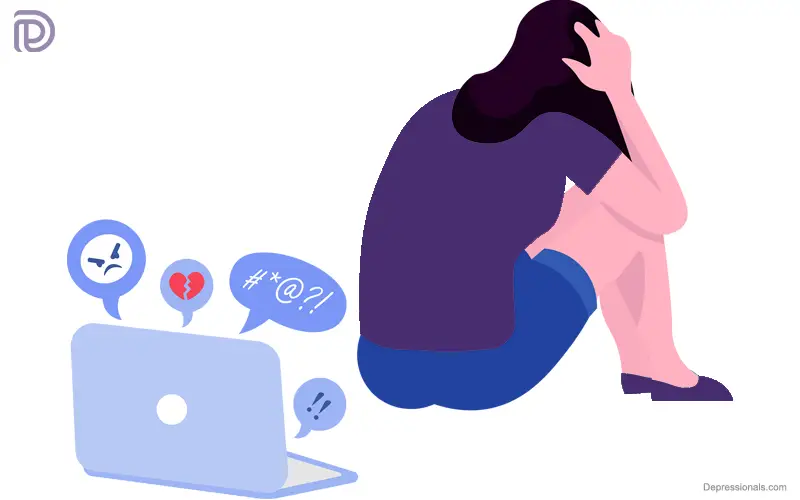The most common type of bullying is physical and verbal aggression that school children are subjected to. It is important to realize that there are actually six different types of bullying: physical, verbal, relational, cyber, sexual and prejudicial.
An abuser may abuse a victim in more than one way by using one or more of the types of bullying described here. Furthermore, bullying does not only affect children and teenagers. Adults are also responsible for bullying others.
This article will discuss the prevalence and consequences of bullying by defining it generally. Next, the article will go over the six types of bullying.
Read: Effects of Bullying on Mental Health
What is bullying?
The term bullying refers to any intentional, repeated, and aggressive behavior directed against an individual within the same age group.
Power imbalances
The imbalance of power between a bully and their victim is one of the most noteworthy characteristics of bullying.
Bullying can be visible when, for example, a big, strong kid bullies a smaller, weaker kid, or when a group of bullies, bullies an individual. Some power imbalances, however, can sometimes be less obvious, due to factors such as popularity, intelligence, or ability, or the victim knowing embarrassing information.
Bullying statistics
Both bullying victims and bullies can be negatively impacted by bullying.
As of January 2019, 19.5% of ninth through twelfth graders had been bullied on school property in the last 12 months, according to recent data from the Center for Disease Control and Prevention (CDC).
Furthermore, an extensive study conducted in 42 countries by the World Health Organization (WHO) in 2013 and 2014 found that in the previous two to three months, 14% of boys and 11% of girls aged 11 were bullied at least twice.
Read: 17 Signs of Materialistic Person
Mental health effects of bullying
Bullied individuals can suffer a variety of long- and short-term problems, including depression, anxiety, social withdrawal, substance abuse, underachievement and low attendance at school and work, and even suicide.
A child who is bullied may later become a victim or perpetrator of violence. Meanwhile, bullies have a higher risk of getting into fights and vandalizing property, abusing drugs and alcohol, getting into trouble as adults, and hurting their romantic partners and children.
Bullying can even affect people who are merely witnesses, including mental health issues and substance abuse.

Types of bullying
The six types of bullying are listed below; some are more obvious than others. These include:
- Physical bullying
- Verbal bullying
- Relational bullying
- Cyberbullying
- Sexual bullying
- Prejudicial bullying
Read: Immature Personality Disorder
Physical bullying
Many people think of physical bullying when they imagine bullying, as it is the most obvious kind of aggression.
When someone is physically bullied, they can be hit, kicked, tripped, or even pushed. A victim’s belongings can also be stolen or broken as a result of inappropriate hand gestures.
Physical bullying is committed by someone or a group of people who are physically stronger or bigger than the person being bullied.
Bullying is not considered physical when two people of similar strength and size get into an altercation.
The prevalence of physical bullying among males is higher than among females, according to studies. Among 7-14-year-old boys, the odds of being hit, punched or kicked and having their stuff taken were higher than girls.
Children between the ages of seven and 10 were also found to be more likely than girls to engage in physical bullying.
Verbal bullying
Verbal bullying involves insulting or intimidating a victim with words spoken or written. Such verbal bullying includes calling someone names, teasing them, or even threatening them.
Children aged seven to ten are the most likely to be verbally bullied using insults, with boys being more likely to be bullied verbally than girls.
It is often difficult to recognize verbal bullying since it takes place when authority figures aren’t present. Bullies can easily pass off their actions as friendly ribbing between friends. Therefore, the victim may have a difficult time proving they have been bullied. The long-term effects of this kind of bullying can cause feelings of stress and anxiety.
Read: 15 Signs of Egoistic Person
Relational bullying
The act of relationship bullying, also known as bullying in the workplace or social bullying, harms a victim’s reputation or relationships. The abuser may embarrass the victim in public, spread rumors, exclude them from social situations, or ostracize them from a group. Due to its social manipulation, it is sly and insidious, unlike more overt forms of bullying.
There is often a connection between relationship bullying and “mean girls.” But while both boys and girls are equally likely to be perpetrators of relationship bullying, it has been shown that more girls than boys are the victims of relational bullying.
Studies have stated that girls who are subjected to relational bullying are more likely to have adjustment difficulties, including difficulties maintaining rewarding and positive relationships.
Research indicates that school counselors generally see relational bullying as less serious than physical and verbal bullying, and that they are less inclined to empathize with the victim of relational bullying than they are with victims of physical and verbal bullying. This might be a result of the difficulty in detecting the intensity of relational bullying.
Read: What is a Toxic Relationship
Cyberbullying
A cyberbullying incident occurs when a victim abuses an electronic device, such as a computer, smartphone or tablet. You can send harmful messages or photos and share humiliating personal information over text messages, social media platforms, apps or online forums.
Cyberbullying Research Center research indicates that 15% of 9- to 12-year-olds have experienced this at some point in their lives, as well as 37% of 13- to 17-year-olds.
The problem of cyberbullying is still evolving, but in-person bullying still prevails. Cyberbullying perpetrators are not only less likely to be caught, but victims can also suffer especially dire consequences because of their online nature.
Cyberbullying can never be avoided, even in the home, since people have their devices with them all day, every day.
Additionally, cyberbully targets may constantly be reminded that they have been bullied online, even if they block the cyberbully.
Sexual bullying
The act of sexual bullying refers to verbally or physically provoking someone in a way they feel uncomfortable with, such as making sexual comments, making crude gestures, spreading sexual rumors, sending sexual images or videos, and touching or grabbing them without their consent.
The prevalence of sexual harassment and bullying is remarkable.
In a study conducted in 2019, 81% of women and 43% of men reported experiencing sexual harassment or assault in their lifetimes.
The practice of sexting, where messages or images are sent or received between electronic devices, is gaining popularity.
The prevalence of sexting among kids between the ages of 11 and 17 rises as they get older; kids between the ages of 11 and 17 send and receive sexts at a rate of 15% and 27%, respectively.
The dissemination of unconsented sexts, such as nude photos or videos, can lead to bullying and even assault when they are sent without consent.
Read: Signs of Self-Obsessed Person
Prejudicial bullying
Bullying that is prejudicial is when the target is attacked for his or her race, ethnicity, religion or sexual orientation. There’s an assumption that some people should be treated more harshly than others based on stereotypes.
Although prejudicial bullying hasn’t been studied nearly as much as other kinds of bullying, research shows that minorities, especially ethnic minorities, are more likely to be bullied.
Ethnic minorities who go to diverse schools get bullied less than their homogenous counterparts.






What’s up everyone, here everyone is sharing these kinds of experiences,
thus it’s fastidious to read this weblog, and I used to pay a visit this weblog every day.
I’ve been absent for some time, but now I remember why I used to love this web site. Thanks, I’ll try and check back more frequently. How frequently you update your site?
Thanks for some other informative site. The place else may I get that kind of information written in such a perfect approach? I’ve a challenge that I’m just now working on, and I have been at the glance out for such information.
This is very informative.
A very good post. The very first time I came across your blog, I found it to be really interesting.
Very informative post
Excellent writeup. It helped me a lot to judge my materialistic friends.
I discovered your weblog web site on google and verify a couple of of your early posts. Continue to maintain up the excellent operate. I simply further up your RSS feed to my MSN News Reader. Searching for ahead to reading extra from you afterward!?
What i don’t realize is actually how you’re not really much more well-liked than you may be now. You’re very intelligent. You realize thus significantly relating to this subject, produced me personally consider it from a lot of varied angles. Its like men and women aren’t fascinated unless it, one thing to do with Lady gaga! Your own stuffs nice. Always maintain it up!